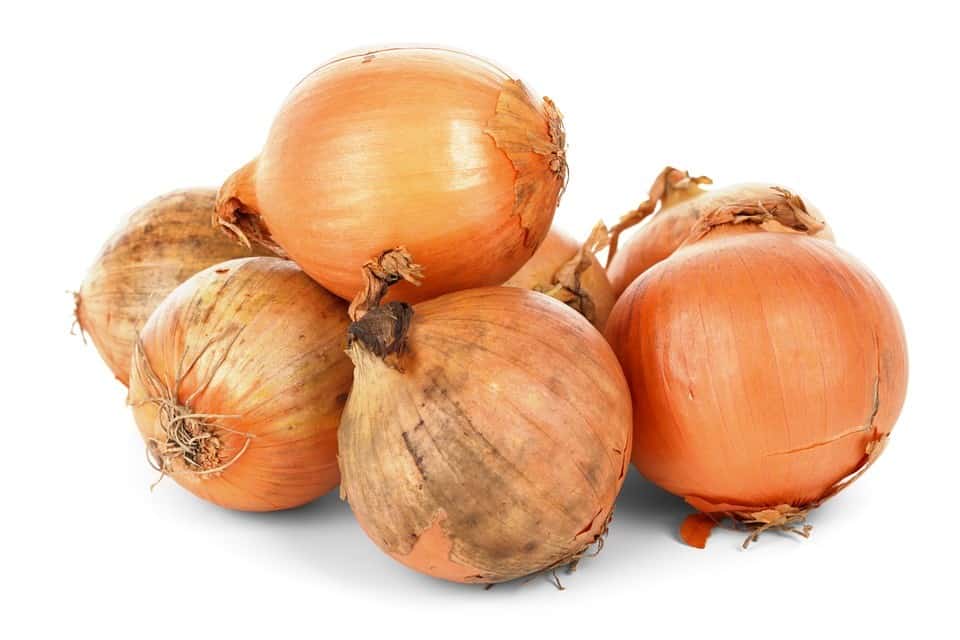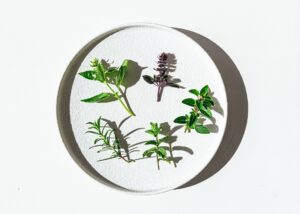The onion is a species of the leek genus.
Apart from the occasional wilderness, the kitchen onion only exists as a cultivated plant in human care. No wild populations are known, nor has any other wild allium species been identified as a direct ancestor. As long as the origin is unclear, the geographical origin of the kitchen onion cannot be precisely determined. Often you will find information such as “Central Asia” or “Afghanistan”. The species Allium vavilovii, currently regarded as the closest relative, is native to Turkmenistan and Iran.
The kitchen onion is one of the oldest cultivated plants of mankind and has been cultivated as a medicinal, aromatic and vegetable plant for more than 5000 years. A Sumerian cuneiform script, which is more than 4000 years old, contains information on cucumber and onion fields, and the Codex Hammurapi defines bread and onions for the poor.
For the Romans, onions were a staple food, especially for the less well-off. It was also the Roman legionaries who spread the “cepula” (from which, via Middle High German “zwibolle”, and ultimately the German word “onion”) in Central Europe. Here they became one of the most common types of vegetables, were a must on every table and were also used as an amulet against the plague in the Middle Ages. From around the 15th century, people in the Netherlands began to specifically breed diverse varieties with different shapes, colors and flavors.
Use as a medicinal plant
The onion was Medicinal Plant of the Year 2015. The fresh onions serve as a remedy.
The organic onions have been shown to have antibacterial effects, low blood pressure, blood lipids and blood sugar, and anticoagulant and antiasthmatic properties have also been proven. The effects of this are said to be mainly due to the antioxidant sulfur compounds in onions.
Externally, onion juice or syrup is used for insect bites, wounds, boils and for the treatment of bruises.
It is interesting that onions do not contain starch. Their carbohydrates, on the other hand, are in the form of so-called fructans. These are water-soluble oligo- and polysaccharides, which protect the onion from drying out, but often lead to complaints such as: for people with a sensitive digestive system. B. cause flatulence.
This is due to the fact that the fructans are poorly absorbed in the small intestine and thus reach the large intestine unchanged, where they are broken down by bacteria. Of all onion plants, mild spring onions are best tolerated raw.
Those who have no problems with onions, on the other hand, can fully enjoy the extremely positive effects of fructans on health. So have studies of the University of Toyama in Japan, for example, it was shown that fructans from onions are effective against influenza A viruses, i.e. against the flu.
In addition, fructans activate the intestinal flora, promote bowel movements and increase the absorption of calcium and other minerals.
The onion is rich in vital substances
100 grams of onions contain round:
- 7.4 mg vitamin C (8 percent of the recommended daily dose): Has an antioxidant effect as a radical scavenger.
- 156 µg vitamin B6 (8 percent of the recommended daily allowance): Is important for the amino acid metabolism.
- 4 µg vitamin B7 (4 percent of the recommended daily allowance): Promotes the growth of blood cells, skin, hair and nerve tissue.
- 162 mg of potassium (8 percent of the recommended daily allowance): Is important for the nerves and muscles.
- 50 mg of sulfur (10 percent of the recommended daily dose): Promotes a healthy intestinal flora, supports the liver and has a detoxifying effect.
- The sulfur compounds contained in the onion are of particularly great medicinal value. By the way, they are also the ones who make tears flow when chopping onions.
Why do your eyes water while chopping onions?
The sulfur compounds in the onion are the sulfur-containing and antiseptic amino acid called iso-alliin. It is located in the outer cell layers of the onion cells. Inside the cell, on the other hand, is the enzyme alliinase.
If these two substances come into contact when the onion is cut, the enzyme splits the amino acid into individual parts, creating the tear-inducing substance propanethiol-S-oxide.
However, you can prevent tears by using a very sharp knife when chopping onions, simply putting on diving goggles with a nose piece or putting the onion in the refrigerator for a while before cutting.
In view of the health-promoting properties of the sulfur compounds – namely especially for the cardiovascular system – one is happy to accept a few tears.
The onion helps with insect bites
When talking about an insect, e.g. B. is stung by a wasp, then it is good to have an onion at hand. Simply cut it apart in the middle and use it to rub the stitch area.
If you squeeze the onion a little, new juice will come out and you can repeat the treatment for the insect bite. The pain should subside significantly after about five minutes.
In most cases, the onion can even help prevent swelling.







